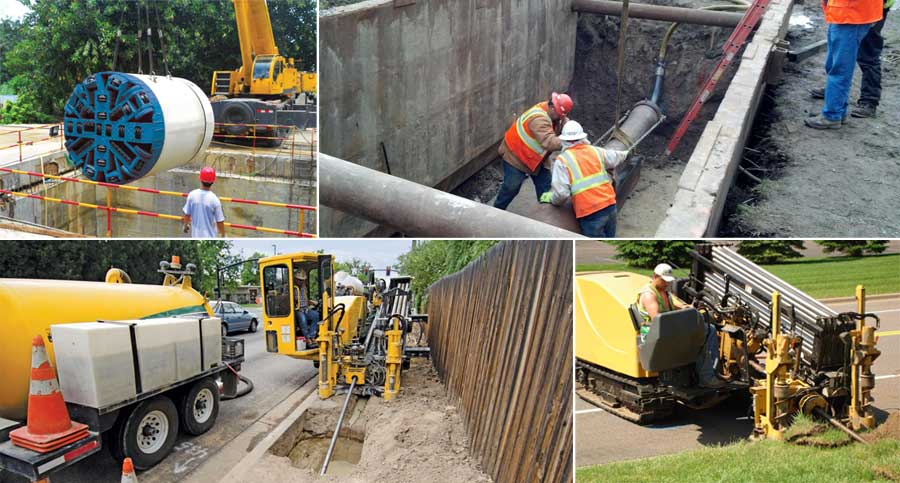Key Takeaways
- Understanding what sewer belly issues are and how they can affect your property.
- The role of trenchless technology in addressing and fixing sewer belly problems.
- Practical insights and real-life examples of successful sewer belly repairs using trenchless methods.
- Insightful resources for further reading and understanding of sewer repairs and trenchless solutions.
What Is a Sewer Belly?
A sewer belly, or a low spot in a sewer line, can cause significant issues for property owners. This dips in the pipe can result in waste and debris accumulating, leading to blockages and sewage backup. As waste and water pass through the pipe, they can get trapped in these low spots, leading to frequent clogs and backups. Not addressing these issues promptly can lead to more severe and costly problems. Many homeowners often wonder, can trenchless sewer repair fix a belly? The answer, as we will explore, is often yes, providing a less invasive and more cost-effective solution. A sewer belly can also cause the pipe to sag over time, further exacerbating the problem and increasing the risk of leaks and other damages.
Symptoms of a Sewer Belly
Identifying the symptoms of a sewer belly early on can save property owners from significant headaches. Some common signs to watch out for include:
- Frequent clogs and slow drains: If you frequently have problems with your drains, it may be because material is getting trapped in the sewer belly.
- Unpleasant odors emanating from drains: Stagnant water and waste can produce foul smells that seep into your home or yard.
- Recurring backups in the sewer system: Persistent backups are often a sign of a deeper issue within the main sewer line.
- Visible signs of leaks or water damage around the affected area: Wet spots or mold growth can indicate a leaking sewer line caused by a belly.
Traditional vs. Trenchless Repair Methods
Historically, repairing a sewer belly required extensive excavation, disrupting landscapes and incurring massive costs. Traditional methods involved digging up the yard to access and replace the damaged pipe, often resulting in damaged driveways, sidewalks, and gardens. This approach not only took a considerable amount of time but also left property owners with a hefty bill for the restoration of their landscape. In contrast, trenchless repair methods have emerged as a modern solution, offering less invasive and cost-effective ways to address sewer belly issues without the disruption of traditional methods. These methods allow technicians to repair the pipe from within, often without any need for digging.
Benefits of Trenchless Technology
Trenchless technology offers various advantages over traditional excavation methods, making it a preferred choice for many property owners facing sewer belly issues. Some of the key benefits include:
- Minimal disruption to landscapes and properties: Since trenchless methods usually involve no digging or minimal excavation, your yard, driveway, and other structures remain largely intact.
- Cost-effective compared to traditional excavation methods: While the initial cost of trenchless repairs might be comparable to traditional methods, the savings on landscape restoration and reduced labor make it more economical overall.
- Faster turnaround time for repairs: Property owners would experience less inconvenience since trenchless solutions can typically be finished in a quarter of the time it would take to dig up and replace a sewage line.
- Durable and long-lasting solutions: Modern trenchless technologies use high-quality materials designed to last for decades, ensuring you won’t have to revisit the repair any time soon.
How Trenchless Repairs Work
Methods like pipe bursting, in which a new pipe is pulled through the old one, and pipe lining, in which a resin-coated liner is inserted and solidifies to form a new pipe within the old one, are examples of trenchless repairs. These methods are designed to fix the sewer belly with minimal digging. In pipe bursting, a bursting head breaks the old pipe apart while simultaneously pulling in a new one, ensuring a seamless replacement. Pipelining, on the other hand, involves inserting a flexible tube coated with epoxy resin into the damaged pipe. Once in place, the tube is inflated, pressing the resin against the pipe walls. The resin then cures and hardens, creating a new, seamless pipe within the old one.
Considering Trenchless Options for Your Property
If you’re experiencing issues that suggest a sewer belly, consulting with a professional plumber about trenchless solutions could be the right step. Ensure they use the latest technology and have a proven track record of successful repairs. It’s crucial to work with knowledgeable professionals who can conduct a thorough inspection using camera technology to precisely diagnose the problem. Once identified, the plumber can recommend the best trenchless method for your situation, whether it’s pipe bursting, pipe lining, or another innovative technique. Additionally, seeking second opinions and reading reviews can help you select a reputable service provider.
Further Reading
For those interested in more detailed technical aspects and case studies, reputable sources like the EPA provide extensive research on the environmental impacts and benefits of modern sewer repair techniques. Understanding the science and advancements behind trenchless technology can offer peace of mind and ensure you’re making an informed decision about your sewer repair needs. Publications and online forums dedicated to plumbing and home maintenance also provide valuable insights, and connecting with other homeowners who have experienced similar issues can give practical advice and recommendations.

